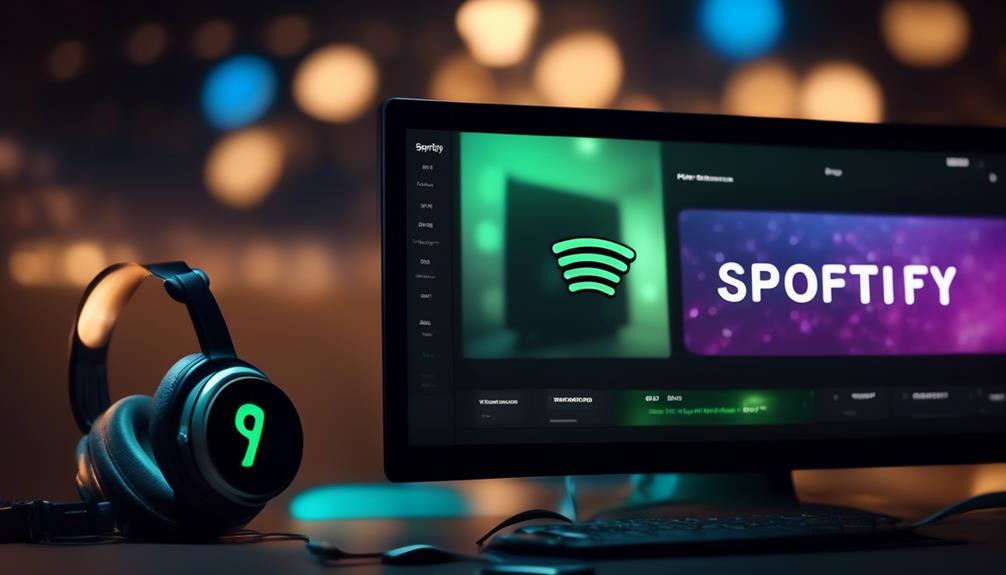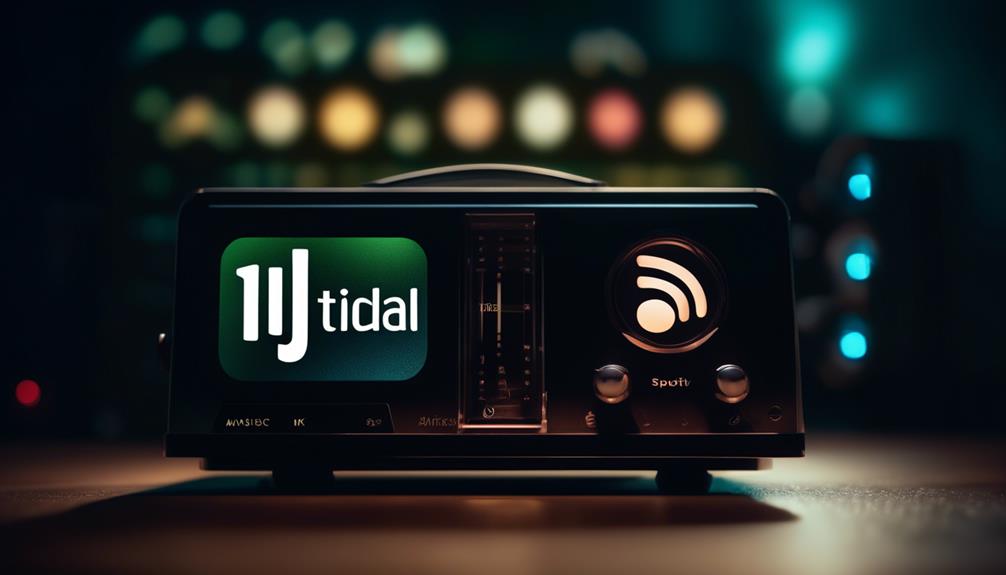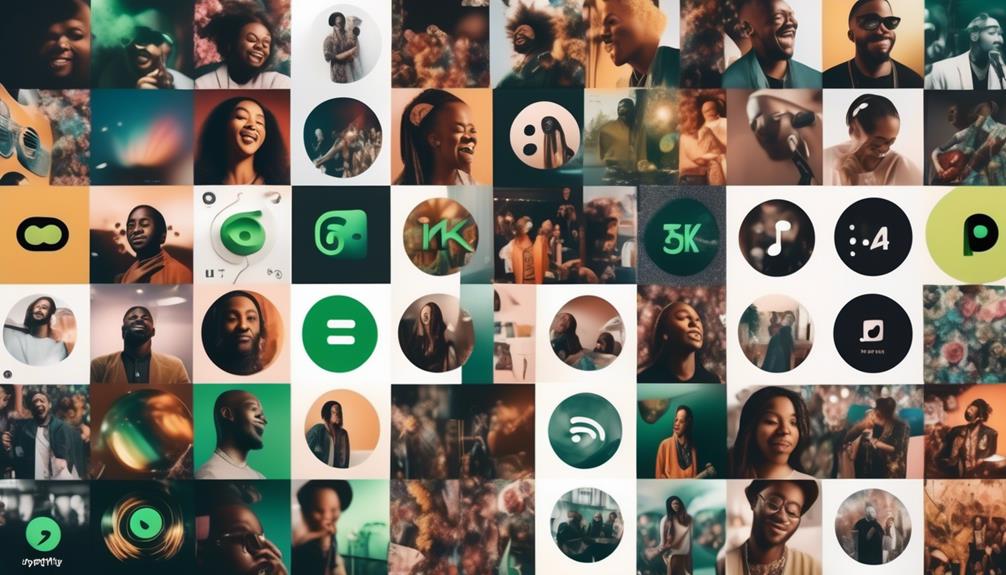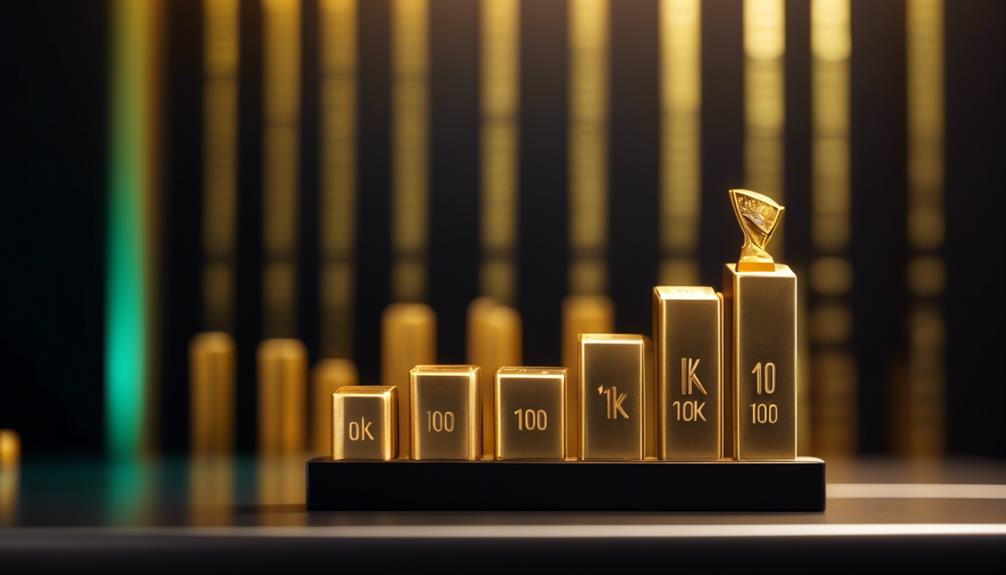
Is 1k streams on Spotify good?
So, you’ve snagged a smooth 1k streams on Spotify and you’re wondering whether that’s something to celebrate or not.
In the sprawling universe of music streaming platforms, understanding the value of 1k streams can seem like a daunting task, especially when you’re trying to gauge your success.
What’s more, factors such as royalties, geographic location, and listener subscription type can all influence Spotify’s payout for those streams.
Stick around – we’re about to peel back the layers of this intriguing issue.
Key Takeaways
- Each play on Spotify contributes to an artist’s popularity and income, making 1k streams a significant milestone.
- Spotify’s algorithm favors tracks that keep listeners engaged, so playlist curation and algorithm manipulation are important strategies to boost stream numbers and payouts.
- Earnings from 1k streams on Spotify can range from $3 to $5, but consistency in stream quality and playlist placements is crucial for maximizing earnings.
- When comparing Spotify to other streaming platforms, it’s important to consider factors such as personalized playlists, integration with devices, audio quality, and exclusive content, as well as the varying payout rates on each platform.
Understanding Spotify Streams

To truly grasp the concept of Spotify streams, you need to delve into the intricacies of how each play contributes to an artist’s overall popularity and income. When you click play, you’re not just enjoying a tune; you’re directly impacting an artist’s success. Every stream counts, contributing to the artist’s royalty payments and placing them higher on Spotify’s algorithmic playlists.
Let’s now focus on Spotify’s global impact. With over 345 million users worldwide, an artist’s reach is virtually limitless. A single stream from you might seem inconsequential, but when multiplied by the platform’s vast user base, it culminates in substantial recognition and earnings for artists.
Playlist curation strategies also play a significant role. By strategically placing tracks in user-curated or algorithmically generated playlists, artists can boost their visibility and catch the ear of potential new fans. It’s a dynamic ecosystem where user engagement, artist exposure, and Spotify’s algorithmic magic intertwine.
In essence, understanding Spotify streams isn’t just about numbers. It’s about recognizing the power you wield as a listener and how your interaction with music can significantly shape an artist’s career trajectory.
The Spotify Business Model
Let’s shift our focus to the Spotify business model, particularly regarding its revenue generation and artist compensation mechanisms.
You’ll find it’s essential to understand how Spotify’s income is influenced by the number of streams and subscriptions.
Equally important is grasping how Spotify allocates its earnings to compensate artists per stream, a critical factor in the platform’s ecosystem.
Understanding Spotify’s Revenue
Often, you might wonder how Spotify generates its revenue, given its free access to millions of songs and podcasts; the answer lies in their intricate and effective business model. Amidst Spotify’s market competition, it has devised unique user engagement strategies to leverage its revenue streams.
The app uses a freemium model, offering free services with ad interruptions and premium ad-free services for a subscription fee. Spotify earns from these ads and subscriptions, making them its primary revenue sources.
Furthermore, it provides label services to artists, harnessing additional revenue. The platform’s success isn’t only about the volume of music it hosts but how it engages users, retains them, and subsequently monetizes this user base intelligently.
Artist Compensation Mechanism
You might be intrigued to know that Spotify’s artist compensation mechanism is as unique and complex as its revenue model, relying heavily on streams and follower counts. This system, while innovative, isn’t without its controversies, primarily related to royalty distribution discrepancies.
In essence, royalties are divided based on popularity, meaning the more streams an artist garners, the larger a slice of the royalty pie they receive. This can pose substantial independent artists challenges. Without a significant following, these artists often find themselves in a catch-22 situation, struggling to gain visibility and, consequently, more streams.
The disparity in Spotify’s model raises questions about fairness and equity, highlighting the need for a more balanced approach in the digital music industry.
How Spotify Counts Streams

You might wonder how Spotify counts streams for your favorite tracks. It’s not as simple as you’d think, thanks to their complex algorithm.
Let’s demystify this by taking a close look at Spotify’s stream counting mechanism and how it actually works.
Understanding Spotify’s Algorithm
To truly master the art of gaining streams on Spotify, it’s crucial to first unpack the intricacies of its algorithm and how it counts streams. Playlist curation and algorithm manipulation are key strategies to understanding and navigating this complex system. Spotify’s algorithm is designed to favor tracks that keep listeners on the platform longer.
Here’s a simple breakdown:
| Aspect | Impact | Strategy |
|---|---|---|
| Playlist Curation | More playlists mean more exposure. | Create and share your playlists. |
| Algorithm Manipulation | Spotify promotes tracks that engage listeners. | Ensure your tracks are engaging. |
| Stream Count | Each stream counts after 30 seconds. | Encourage listeners to complete tracks. |
Stream Counting Mechanism
Diving into the mechanics of how Spotify counts streams, it’s essential to note that a play is considered valid, contributing to the stream count, only after a listener has played a track for at least 30 seconds.
- Stream Fraud Detection: Spotify has robust mechanisms to detect and counteract fake plays. Any plays identified as fraudulent aren’t included in the stream count.
- Playlisting Impacts: Getting a track placed on popular playlists can significantly influence its stream count.
- Repeat Plays: If a user plays a song repeatedly, each play over 30 seconds counts as a stream.
- Offline Plays: Plays in offline mode are also counted once the user goes online.
Understanding these elements can give you a more detailed insight into your Spotify performance.
Earnings From 1k Spotify Streams
Surprisingly, the monetary returns from 1k streams on Spotify mightn’t be as lucrative as one would expect. Factors such as stream quality impact and playlist placements have a profound effect on your earnings. For instance, high-quality streams from premium accounts yield more earnings than low-quality streams from free accounts.
Playlist placements can also significantly boost your earnings. If your track is included in a popular playlist, it’s likely to be played more frequently, leading to a rise in stream numbers. The more streams, the bigger the payout.
However, it’s important to note that Spotify operates on a pro-rata model. This means that the total revenue is divided among all artists based on their share of total streams. So, if your track comprises a tiny fraction of the total streams, your earnings might be minuscule.
To put it in perspective, Spotify pays about $0.003 to $0.005 per stream. That means, for 1k streams, you’re looking at earnings of approximately $3 to $5. While it may not seem much, remember that numbers can quickly add up if you consistently generate high stream counts. It’s all about staying persistent and producing quality content that resonates with listeners.
Comparing Spotify to Other Streaming Platforms

When you stack Spotify up against other music streaming platforms, you’ll find a fascinating array of differences and similarities in terms of payouts, audience reach, and discovery features.
Let’s analyze four key areas:
Platform features comparison:
- Spotify is an industry leader with its personalized playlist feature.
- Apple Music’s integration with Apple devices is a powerful draw.
- Tidal emphasizes high-quality audio and exclusive content.
- Amazon Music leverages its Prime membership base.
User interface analysis:
- Spotify’s UI is clean and intuitive, with easily accessible playlists and radio stations.
- Apple Music’s interface is similarly user-friendly but leans heavily on aesthetics.
- Tidal’s UI, while sleek, may require a slight learning curve.
- Amazon Music’s interface is straightforward, but some users find it less engaging.
Payouts:
- Apple Music generally pays more per stream than Spotify.
- Spotify’s larger user base may balance out total payouts.
- Tidal and Amazon Music also offer competitive rates.
Audience Reach and Discovery Features:
- Spotify’s Discover Weekly and Release Radar playlists help artists reach new listeners.
- Apple Music and Amazon Music rely more on curated playlists.
- Tidal prioritizes new releases from big-name artists.
Each platform has its strengths, so your choice largely depends on your priorities as an artist.
Factors Influencing Stream Count
Understanding the factors that influence your stream count on Spotify can significantly improve your strategy as an artist. To maximize your reach, it’s crucial to consider the geographical influence on streams, and the impact of playlist placements.
Geography plays a significant role in your streams. Your music may resonate more with certain cultures or regions, affecting your overall stream count. Playlist placements, on the other hand, can drastically increase your visibility. Landing on a popular playlist exposes your music to a larger audience, potentially leading to more streams.
Consider the following table:
| Factor | Description | Strategies |
|---|---|---|
| Geographical Influence | Your music’s popularity can vary by region. | Research your audience and tailor your promotion. |
| Playlist Placements | Placement on popular playlists increases visibility. | Network and submit your music for playlist consideration. |
| Time of Release | Release time can affect initial stream count. | Plan your release at a time when your audience is most active. |
| Quality of Music | High-quality music attracts more listeners. | Invest in good production and mixing. |
Understanding these factors empowers you to make informed decisions, pushing your music into the innovative spaces where it can truly shine.
Case Study: Artists With 1k Streams

Now, let’s analyze specific examples of artists who’ve successfully garnered 1k streams on Spotify, and dissect their strategies and attributes that contributed to this milestone.
- Emerging Pop Star: This artist capitalized on the genre popularity of pop music. By creating catchy, upbeat tunes, she drew in a young, energetic demographic – a group that dominates streaming demographics.
- Veteran Jazz Musician: Despite jazz’s lower streaming numbers, this artist reached 1k streams by tapping into a dedicated, niche audience. His mastery of the genre and consistent output of high-quality content kept his loyal listeners coming back.
- Indie Rock Band: This group used social media to boost their Spotify streams. By actively engaging with their fanbase online, they directed traffic to their Spotify page, hitting the coveted 1k mark.
- Electronic Dance Music (EDM) DJ: This artist leveraged the high-energy, feel-good nature of EDM and its widespread appeal. Regular appearances at festivals and clubs helped him reach a broad audience on Spotify.
These case studies show that a mix of genre popularity, understanding streaming demographics, strategic marketing, and consistent content delivery can help artists reach and surpass the 1k stream milestone.
Strategies to Increase Spotify Streams
To boost your Spotify streams and hit the famed 1k milestone, there’s a variety of effective strategies you can employ, each of which we’ll dissect in detail.
Firstly, let’s explore the Playlist Placement Strategy. It’s all about getting your music on popular playlists. Start by finding playlists that align with your genre and audience, then reach out to the curator with a compelling pitch. Remember, it’s not just about volume, but also the quality of your listenership.
Next, let’s delve into the power of Social Media Promotion. It’s no secret that social media is a vital tool for artists to connect with their audience. Harness its potential by promoting your Spotify tracks on your social platforms. This isn’t about spamming your followers, but rather, creating engaging content that naturally integrates your music. You could run a competition, create a music video, or even share behind-the-scenes footage from your recording sessions.
These strategies, when implemented correctly, can create a significant boost in your Spotify streams. So don’t shy away from innovation and creativity. The 1k milestone isn’t just a number; it represents a community of listeners tuned into your music. And that’s powerful.
Perspective: Defining “Success” on Spotify

While the 1k streams milestone on Spotify is an impressive feat, it’s crucial to remember that defining ‘success’ on this platform isn’t solely about numbers, but also about building a dedicated and engaged audience. As you navigate through the streaming world, understanding Spotify Metrics can be your compass, guiding you towards ‘Defining Success’.
- Listener Retention: It’s not just about how many people listen to your music, but also how often they come back. High listener retention signifies a loyal audience.
- Playlist Adds: When listeners add your song to their playlists, it shows that your music resonates with them. It also increases your exposure and reach.
- Followers: A growing follower count reflects an expanding fanbase. It’s a sign that people are excited about your music and want to stay updated.
- Save Rate: If listeners save your tracks to their library, it indicates that your music has a lasting appeal.

